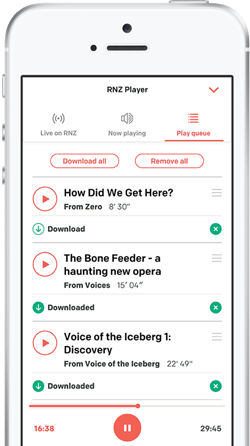A Singapore-based satellite operator has put in an order for a new satellite which aims to bring high speed broadband to unserviced and remote areas in the Pacific and South East Asia.
Already governments and telecommunications providers in three South East Asian countries and 11 Pacific Island countries have signed up for Kacific's services which are scheduled to come on line in 2019.
Kacific chief executive Christian Patoraux spoke with Koroi Hawkins who began by asking about the viability of running a satellite with such a huge footprint in the Pacific.

Photo: Giff Johnson
Transcript
CHRISTIAN PATORAUX: The reason why footprint was an issue was because it was not necessarily economical to put an entire satellite over the Pacific. So you would have to put a satellite that would look at the Pacific region. Put capacity, most of its capacity on the Pacific region and as you know the Pacific region is not the most populous place. So it may be difficult to find a market for an entire satellite there. What we did is that we have a satellite that will straddle South East Asia and the Pacific in order to bring, to build a critical mass to justify the purchase of an entire satellite. So if you want the Pacific in this case benefits from the fact that we found enough market in South East Asia to also serve the Pacific. Not only that but, our satellite is only about half a satellite. The other half is used by the Japanese corporation Sky Perfect JSAT. So in that sense we did not have to put all the money to buy an entire satellite but about half of that.
KOROI HAWKINS: And the figures are quite steep. Maybe if you can run us through how much it is going to cost and how long? ( It is going to take to get up and running?)
CP: To build the satellite and to launch it, to insure it, to put in all the ground systems and so on and only for our about half of the satellite it is costing $US147 million that we have raised over the last three and a half years that our project has been in the making. In order to raise this money we had to show the finance industry that we have revenue that were already secured and to do this we find that all the contracts that were mentioned already with 15 different customers and that amounts to total revenue of $US434 million of secured revenue. Now in terms of timeline a satellite will have to live in space for at least 15 years. In our case the Boeing satellite is actually planning to live longer than that. But to live that long alone in space you have to take all the steps necessary during the construction. So it will take two and a half years to build it to test it, to make sure that the satellite is robust and has all the units and redundancy on board to deliver the remarkable service that it will deliver in the Pacific.
Mr Patoraux estimates the service would cost the average person in the Pacific five to ten US dollars per month for 3-4 GB of data at speeds of more than 100 megabits per second.
Mr Patoraux says telecommunications providers could be deliver the service via wifi with internet vouchers or through the local 3G or 4G mobile networks.
Given the early sales success in Asia-Pacific, Kacific is now expanding its model to other regions with plans for follow-on satellites.
To embed this content on your own webpage, cut and paste the following:
See terms of use.


